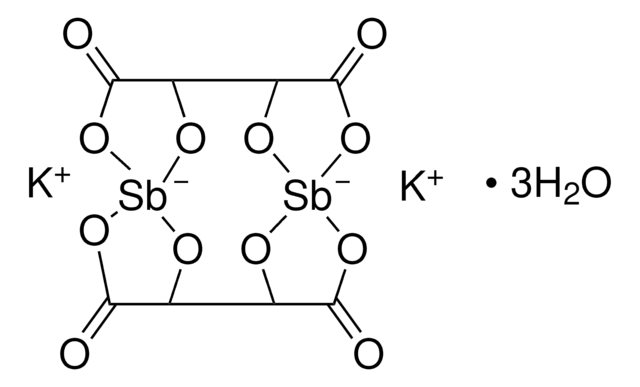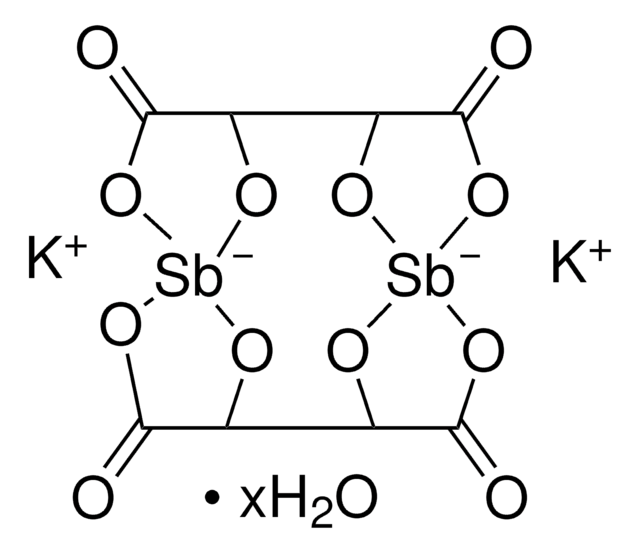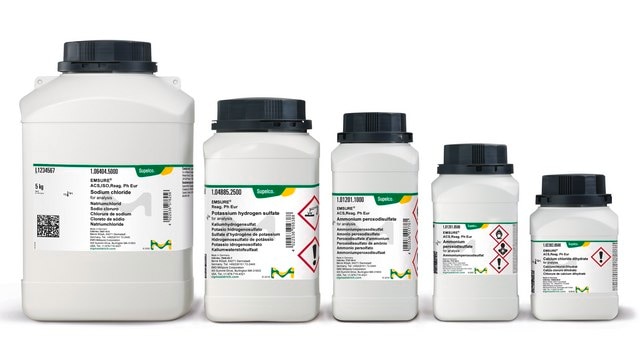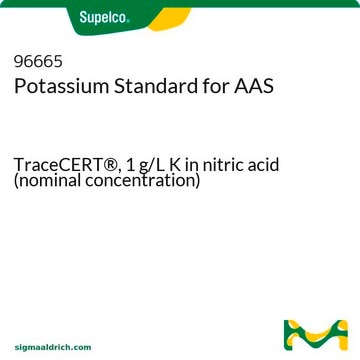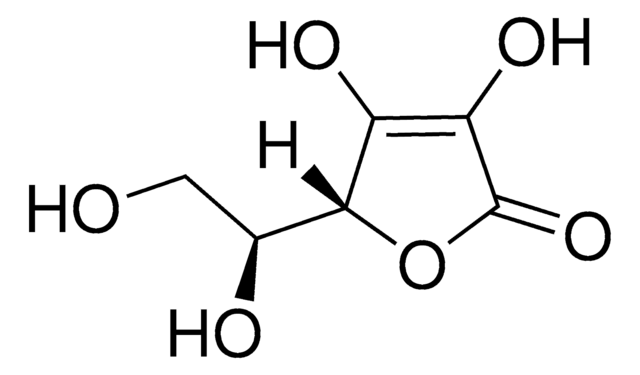11126
Potassium antimonyl tartrate trihydrate
puriss., meets analytical specification of USP, 99.0-103.0%, powder
Synonym(s):
Antimony potassium tartrate trihydrate, Tartar emetic
About This Item
Recommended Products
grade
puriss.
Quality Level
assay
99.0-103.0%
form
powder
quality
meets analytical specification of USP
impurities
≤0.02 mmol/g free acid
≤0.02 mmol/g free alkali
loss
≤2.7% loss on drying, 105 °C
mp
≥300 °C (lit.)
cation traces
As: ≤150 mg/kg
Pb: ≤20 mg/kg
SMILES string
O.O.O.[K+].[K+].O=C1O[Sb-]23OC1C4O[Sb-]5(OC(C(O2)C(=O)O3)C(=O)O5)OC4=O
InChI
1S/2C4H4O6.2K.3H2O.2Sb/c2*5-1(3(7)8)2(6)4(9)10;;;;;;;/h2*1-2H,(H,7,8)(H,9,10);;;3*1H2;;/q2*-2;2*+1;;;;2*+3/p-4
InChI key
WBTCZEPSIIFINA-UHFFFAOYSA-J
Looking for similar products? Visit Product Comparison Guide
Related Categories
General description
Application
It may also be used as a standard solution to determine the metalloid concentration such as Sb(III) and Sb(V) in surface soil, using high performance liquid chromatography coupled to inductively coupled plasma-mass spectrometry (HPLC-ICP-MS).
signalword
Danger
hcodes
Hazard Classifications
Acute Tox. 3 Oral - Acute Tox. 4 Inhalation - Aquatic Chronic 2 - Skin Irrit. 2 - Skin Sens. 1
wgk_germany
WGK 3
flash_point_f
Not applicable
flash_point_c
Not applicable
ppe
dust mask type N95 (US), Eyeshields, Faceshields, Gloves
Choose from one of the most recent versions:
Certificates of Analysis (COA)
Sorry, we don't have COAs for this product available online at this time.
If you need assistance, please contact Customer Support.
Already Own This Product?
Find documentation for the products that you have recently purchased in the Document Library.
Customers Also Viewed
Our team of scientists has experience in all areas of research including Life Science, Material Science, Chemical Synthesis, Chromatography, Analytical and many others.
Contact Technical Service